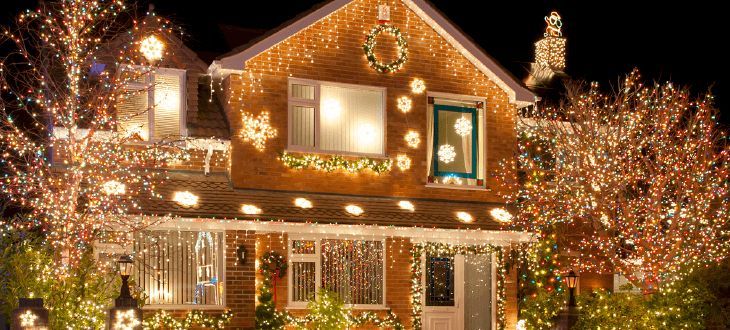As the festive season approaches, millions of households across the globe are set to illuminate their homes with twinkling Christmas lights. However, beneath the enchanting glow lies a less charming reality: these holiday decorations consume significant energy.
Christmas lights, a cherished holiday tradition, consume a staggering amount of electricity. In the United States alone, the energy used by Christmas lights amounts to 6.63 billion kilowatt hours annually, enough to power 14 million refrigerators. This figure is more than the yearly electricity consumption of some developing countries, such as El Salvador and Ethiopia.
In the United Kingdom, a city renowned for its holiday decor like London, uses up to 750,000 LED light bulbs for its festive displays. Globally, the energy consumption from Christmas lights is so significant that NASA has observed parts of the Earth being up to 50% brighter between U.S. Thanksgiving and New Year’s Day.
The type of bulbs used can significantly impact energy consumption. Incandescent bulbs, while offering a warm glow, are less energy-efficient than their LED counterparts. For instance, a 100-bulb strand of incandescent mini lights consumes 41 watts, costing approximately £7.80 to power for the holiday season, while a similar LED strand uses just 0.07 watts, costing a mere £0.13.
The shift towards LED lights has been significant, with these bulbs dominating the market. They consume 80-90% less energy than incandescent bulbs and have a lifespan of up to 100,000 hours, compared to 3,000 hours for an incandescent bulb.
Solar-powered Christmas lights are another energy-efficient alternative. These lights generate their power independently from an electricity source, making them a viable option for those living in sunny locations.
However, the energy consumption of Christmas lights is about more than just the type of bulbs used. The duration these lights are left on also plays a crucial role. Timers can be used to manage the time the lights are on, helping control energy usage.
The environmental impact of Christmas lights extends beyond energy consumption. NASA has observed that parts of the Earth are up to 50% brighter between U.S. Thanksgiving and New Year’s Day. This increase in nighttime lighting can disrupt the sleep patterns of both humans and nocturnal animals and has potential links to health issues such as obesity and breast cancer.
How much money can you save by switching to LED Christmas lights?
Switching to LED Christmas lights can result in significant energy and cost savings. LED Christmas lights offer an average of 90% energy savings compared to traditional incandescent lights.
To put this into perspective, a string of LED fairy lights suitable for a 7-foot Christmas tree will cost roughly £1.73 to run over the festive period. On average, 200 LED Christmas lights cost just £0.5 per day. If you want your lights to be on all evenings during November and December (61 days) for 8 hours a day (488 hours total), it will only cost you £35.
If you have a modest Christmas display, your energy costs would be approximately £10-£15 for incandescent lights or around £2 for LEDs for the holiday season. The typical energy costs for heavy usage would be approximately £115 for traditional lights versus £15-£20 for LED lights.
In contrast, the most expensive light to run is a Santa rope light archway: It costs £6.08 to run for six hours a day, which equates to more than £188 for the month. An average set of indoor mains-powered fairy lights would cost just £12 to run for six hours daily.
Therefore, the savings from switching to LED lights can be substantial. However, the exact amount you can save will depend on the number of lights you use, how long you leave them each day, and the type of lights you are replacing.
Here’s a table summarising an estimated cost comparison between LED and incandescent Christmas lights:
|
Type of Light |
Initial Cost per Strand |
Energy Cost for Modest Display |
Energy Cost for Heavy Usage |
Lifespan |
|
LED |
£4.50 – £18.75 |
£2 |
£11.25 – £15.00 |
50,000 hours |
|
Incandescent |
£3.00 – £7.50 |
£10 – £15 |
£115 |
3,000 hours |
Despite these concerns, there are ways to enjoy the festive sparkle responsibly. Switching to LED lights, using timers, and considering solar-powered options can all help reduce the environmental footprint of our holiday decorations.
Additionally, recycling or repurposing old lights, exploring alternatives, and promoting eco-friendly holiday decorations can further reduce our environmental footprint and create a more conscious and responsible holiday season.
As we deck our halls this festive season, remember that a bit of awareness and a few simple changes can help us celebrate sustainably, ensuring a merry and bright future for us all.
Let’s shine a light on the dark side of Christmas lights and embark on a journey towards a safer, more sustainable, and more conscious holiday season!
For more information about Christmas lights and other sustainable living solutions, please visit www.greenmatch.co.uk.



